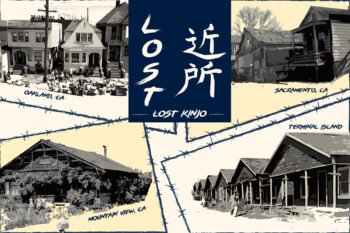By Jana Monji, AsAmNews Arts & Culture Writer
Lately, there’s been talk about caste systems existing in the US.
The film Writing with Fire helps illustrate the rigid barriers of the caste system in India and how they are being challenged today by a gutsy group of women. Writing with Fire is informative, inspirational and well-worth your time. Directors Rintu Thomas and Sushmit Ghosh follow a group of Dalit women as they investigate socio-political issues ranging from rape to political injustice and organized crime.
The film begins with text that explains the background:
Established around 1500 BC, India’s caste system divides humans into a social hierarchy of four castes: priests, warriors, traders and laborers.
LATEST STORIES
Dalits are considered so impure, they are deemed untouchable and excluded from the caste system. Dalit women have borne the greatest brutality of this hierarchy.
Uttar Pradesh, in north India, witnesses endemic levels of violence against women and Dalits. When a group of Dalit women in Uttar Pradesh created their own newspaper in 2002, they were expected to fail.
Instead, they stirred a revolution.
Their newspaper, Khabar Lahariya (meaning ‘Waves of News’) continues to be India’s only newspaper run entirely by women.
When the documentary begins, the women at Khabar Lahariya are confronting a technological revolution. The women are transitioning to digital media. They keep their weekly hard copy, but with a YouTube channel they have expanded their reach. Some of the women have never used a cellphone before nor shot video. Some of the instructions are basic; others are for standardization (Always shoot horizontally).
Meera tells us, “In our region, a journalist meant you are an upper-caste man.” For that reason, “a Dalit woman journalist was unthinkable.”
The first case we hear is horrific. This is 2016 and yet a Dalit woman recounts how a group of four men waited until she was alone and then forced their way in. They raped her and not just once. She tells the chief reporter, Meera, “I was raped on 16, and 8th, 19th, 2nd, 3rd and also 10th.”
Her husband Rampal Yadav reveals this all happened in January. When asked if they went to the police, the husband says, “The police refuse to lodge our complaint.” Instead, the police threatened and assaulted the couple. With such impunity, the Dalit couple fears that “these men can do anything. They can even kill both of us.”
When Meera follows up with the police officer, she films the replies. The officer wasn’t there at the time the couple came to complain. That officer was no longer stationed there. Although the husband had been to the police station five times, there was no record. Meera is unrelenting, assertive and passionate.
Married at 14, Meer was lucky to have in-laws who supported her educational aspirations. She completed her master’s in political science and she also has a degree in teaching. Even so, her husband didn’t want her to work. “Everybody wants to marry an educated girl, but no one wants her to work after marriage.”
The reporters at Khabar Lahariya don’t just take on feminist issues. They also look into illegal mining operations. Unregulated mining can threaten a small village in many ways such as potentially causing parts of the village to collapse. When one man’s brother objected, he was beaten to death.
The journalists also follow and question a politician who they feel has been inciting violence.
Meera says, “I believe journalism is the essence of democracy.” But “journalists must use this power responsibly, otherwise the media will become like any other business.”
In India, where, since 2014 over 40 journalists have been killed, the film tells us, making India one of the most dangerous places to be a journalist. Democracy for all is really a matter of asking women what freedom means to them in India. From their perspective, India is neither a democracy nor are women free. How can women be free if they can be regularly raped without legal recourse? How can the Dalit participate in a democracy is they are not just untouchables, but disrespected and unheard.
Meera who appeared virtually for the Q&A after the documentary, is now the bureau chief with 24 journalists working for her.
Writing with Fire won the Sundance Audience Award for World Cinema Documentary and World Cinema Documentary Special Jury Award for Impact for Change. In Hindi with English subtitles.
AsAmNews has Asian America in its heart. We’re an all-volunteer effort of dedicated staff and interns. Check out our new Instagram account. Go to our Twitter feed and Facebook page for more content. Please consider interning, joining our staff, or making a financial contribution to support us.









